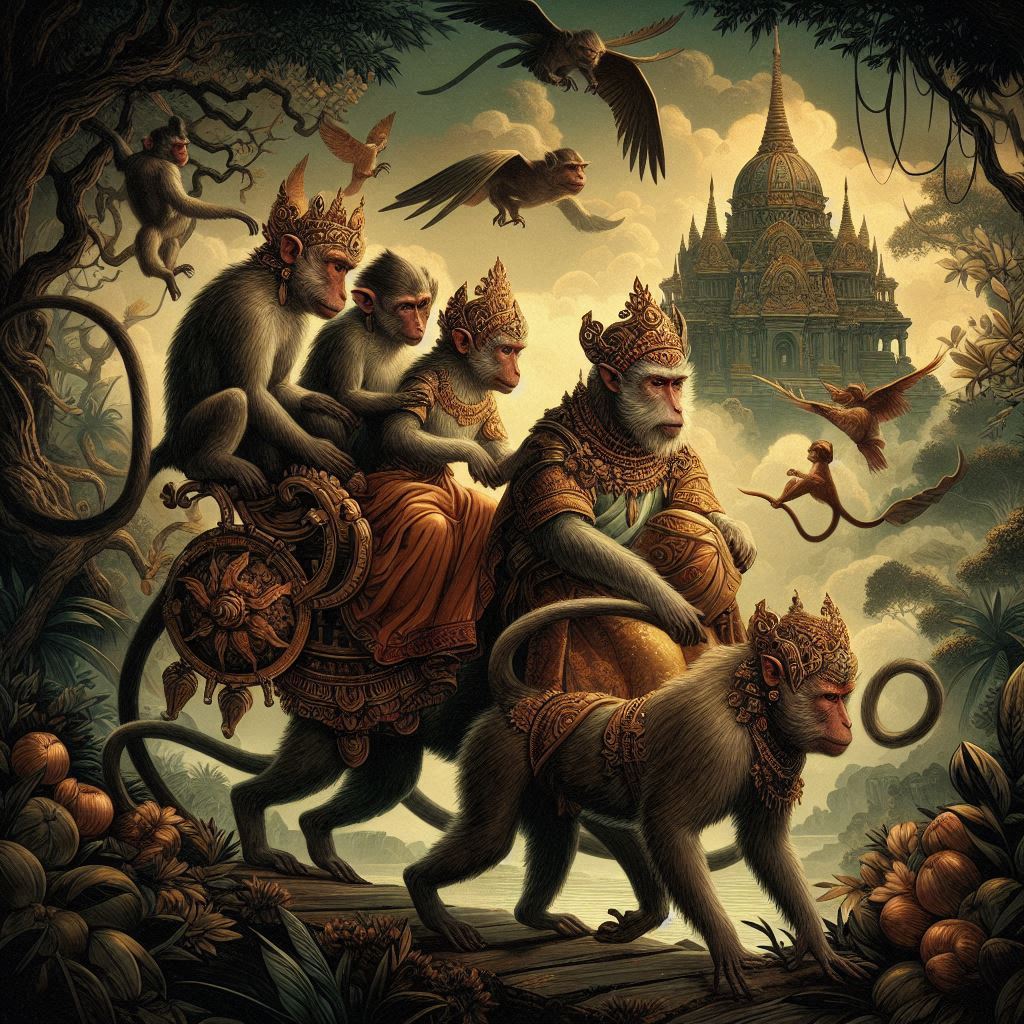
Monkeys in Folklore: Legends from Around the World
Share
Monkeys in Folklore: Legends from Around the World
Monkeys have long captivated human imagination, often symbolizing playful mischief, intelligence, and adventure. Across cultures and continents, these fascinating primates feature prominently in folklore, myths, and legends. Whether as tricksters, wise guides, or divine beings, monkeys have played an essential role in shaping storytelling traditions worldwide. In this blog post, we’ll explore some of the most intriguing monkey legends from different cultures and delve into the symbolic meanings of these stories.
The Trickster Monkey: Symbol of Mischief and Wit
In many cultures, monkeys are seen as tricksters—creatures known for their cunning and cleverness. These mischievous primates often outsmart other animals or even humans in the stories they appear in. Their wit and quick thinking make them fascinating characters, representing the ability to adapt to any situation with a clever solution.
One of the most famous trickster monkeys appears in African folklore. In these stories, the monkey is often portrayed as a sly and resourceful character, using its intelligence to overcome challenges or deceive those around it. This figure symbolizes the cleverness and resourcefulness required to navigate life’s obstacles, particularly when faced with adversity.
The Journey to the West: Sun Wukong, the Monkey King
Perhaps the most famous monkey figure in folklore is Sun Wukong, the Monkey King, from the Chinese classic novel Journey to the West. Sun Wukong is one of the most iconic characters in Chinese literature and has had a profound influence on Chinese culture. Known for his incredible strength, intelligence, and magical abilities, he’s often depicted as a mischievous, rebellious character who defies both gods and men.
In the story, Sun Wukong causes havoc in heaven, stealing the peaches of immortality and even challenging the Jade Emperor, the ruler of heaven. However, after being imprisoned by the Buddha, Sun Wukong embarks on a journey of redemption, ultimately assisting the monk Xuanzang on his quest to retrieve sacred Buddhist scriptures.
Sun Wukong represents many themes, including loyalty, redemption, and the power of transformation. His journey from a trickster to a hero is a reflection of growth, learning, and the value of humility.
Hanuman: The Divine Monkey God of Hindu Mythology
In Hindu mythology, one of the most revered monkey figures is Hanuman, the monkey god and loyal companion to Lord Rama. Hanuman’s tale is told primarily in the ancient Indian epic, the Ramayana, where he plays a central role in the battle against the demon king Ravana.
Hanuman is a symbol of strength, devotion, and selfless service. He possesses extraordinary powers, such as the ability to change size, fly, and move mountains. His loyalty to Lord Rama and his bravery in rescuing Sita, Rama’s wife, from Ravana’s clutches, make him a beloved figure in Hindu tradition.
Hanuman is often depicted as a powerful, heroic figure, but also as humble and dedicated, qualities that make him a symbol of devotion and resilience. To this day, Hanuman remains an important figure in Hindu culture, worshipped as a deity who protects and guides his followers.
The Legend of the White Monkey: South American Folklore
In South American folklore, monkeys are often featured as magical or spiritual beings. One particularly intriguing tale is that of the White Monkey, which appears in several indigenous myths across the Amazon region. In these stories, the White Monkey is considered a divine figure or messenger, bringing wisdom, healing, and protection to those who encounter it.
In some variations of the story, the White Monkey is said to possess the ability to transform into a human, guiding individuals through difficult challenges. The legend of the White Monkey often reflects themes of transformation, enlightenment, and the connection between the physical and spiritual worlds.
The Titi Monkeys of the Amazon
In Brazilian folklore, there’s a famous tale about the Titi monkeys, small primates native to the Amazon rainforest. According to the legend, these monkeys were once humans who were transformed by an angry deity as punishment for their disrespectful behavior. As a result, the Titi monkeys became small and agile, living in the trees and serving as a reminder to humans about the importance of respect for nature and the divine.
This story, like many folklore tales, teaches a lesson about humility, the consequences of actions, and the balance between humans and nature. The Titi monkeys’ connection to the spirit world highlights the reverence indigenous cultures have for animals and the natural environment.
The Monkey in Japanese Folklore: Sarutahiko and the Monkey Spirit
In Japanese folklore, monkeys are often associated with gods and spirits. One notable figure is Sarutahiko, the god of guidance and protector of travelers. In Japanese mythology, Sarutahiko is depicted as a monkey-like deity, often shown with a long nose and an energetic demeanor. He is said to help guide those on difficult journeys, ensuring they stay safe and find their way.
Additionally, in Japan, monkeys are believed to be protectors of the home and family. This belief is connected to the idea of the “three wise monkeys,” which represent the principle of “see no evil, hear no evil, speak no evil.” These monkeys, often depicted in art and statues, embody the wisdom of avoiding negativity and living with integrity.
Monkeys in African Folklore: The Story of the Clever Baboon
In many African cultures, baboons and other monkeys are depicted as wise or trickster figures in folklore. One popular tale comes from the Zulu tradition, where the baboon is seen as a clever figure who can outwit other animals, including lions and elephants.
In these stories, the baboon often uses its quick thinking and agility to solve problems or escape dangerous situations. The baboon’s intelligence and resourcefulness symbolize the value of wit and adaptability in overcoming life’s challenges. This folklore also teaches the importance of respecting nature and understanding the balance between humans and animals.
Conclusion: Monkeys as Symbols of Wisdom, Mischief, and Transformation
Monkeys in folklore have been symbols of a wide range of qualities, from wisdom and strength to mischief and playfulness. Whether as the wise and loyal Hanuman in Hindu mythology or the trickster Sun Wukong in Chinese literature, monkeys represent both the lighthearted and serious sides of life. These stories have persisted for generations, shaping cultural identities and moral lessons.
From the Amazon rainforests to the temples of India, the monkeys of folklore continue to captivate the imagination and teach timeless lessons. They remind us that, just like in the legends, there is always more to discover about ourselves, our culture, and the animals that share our world.
Want to learn more about animal behaviors and fun facts? Check out:
